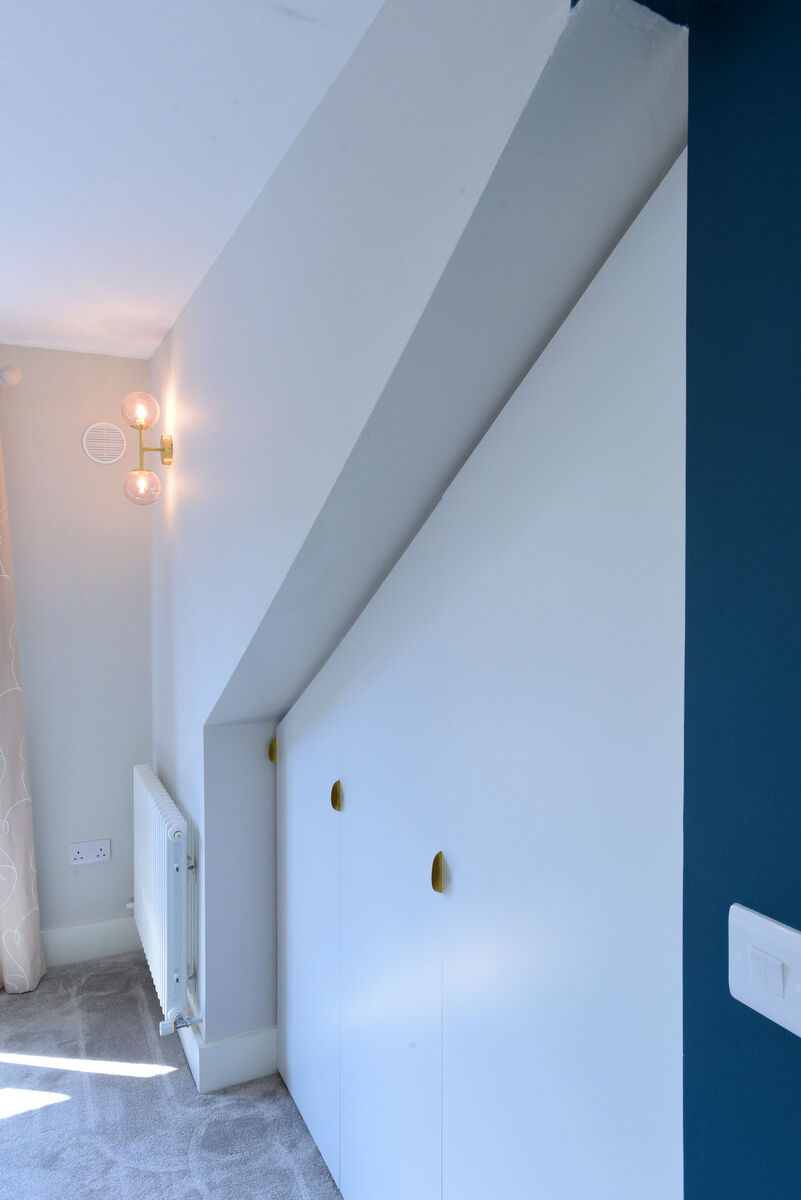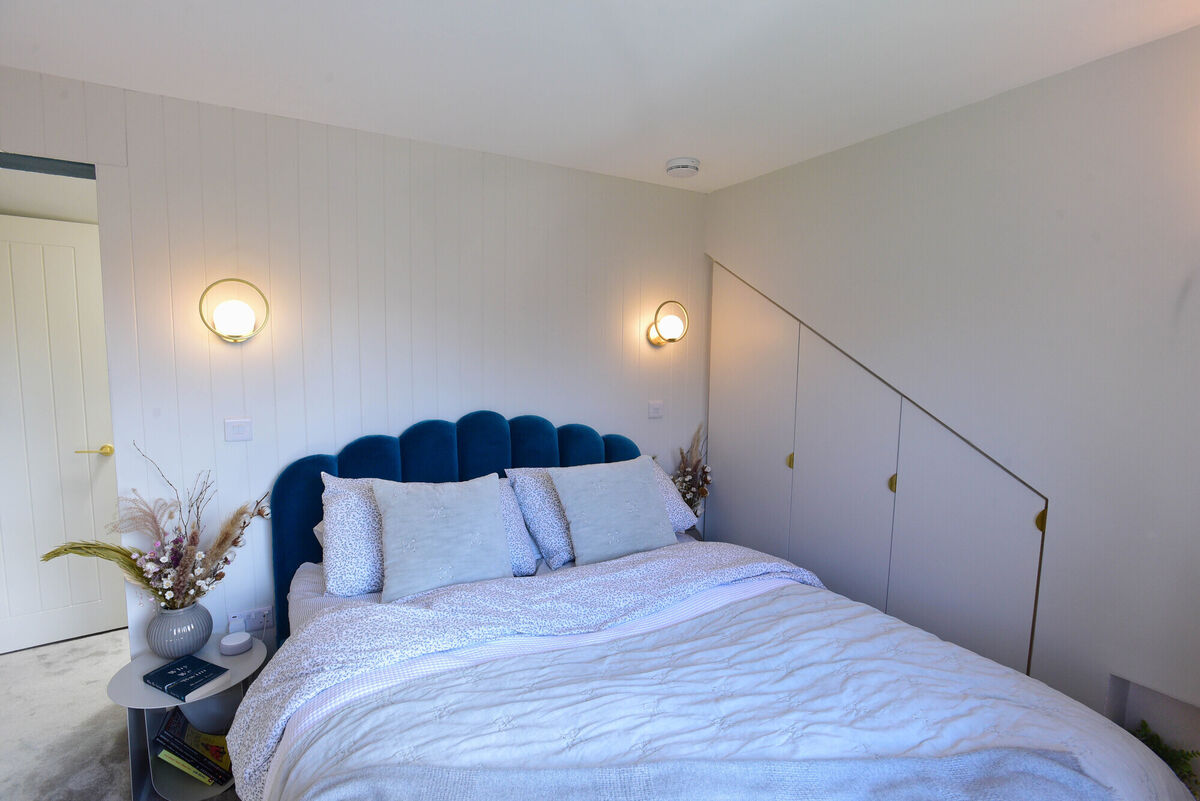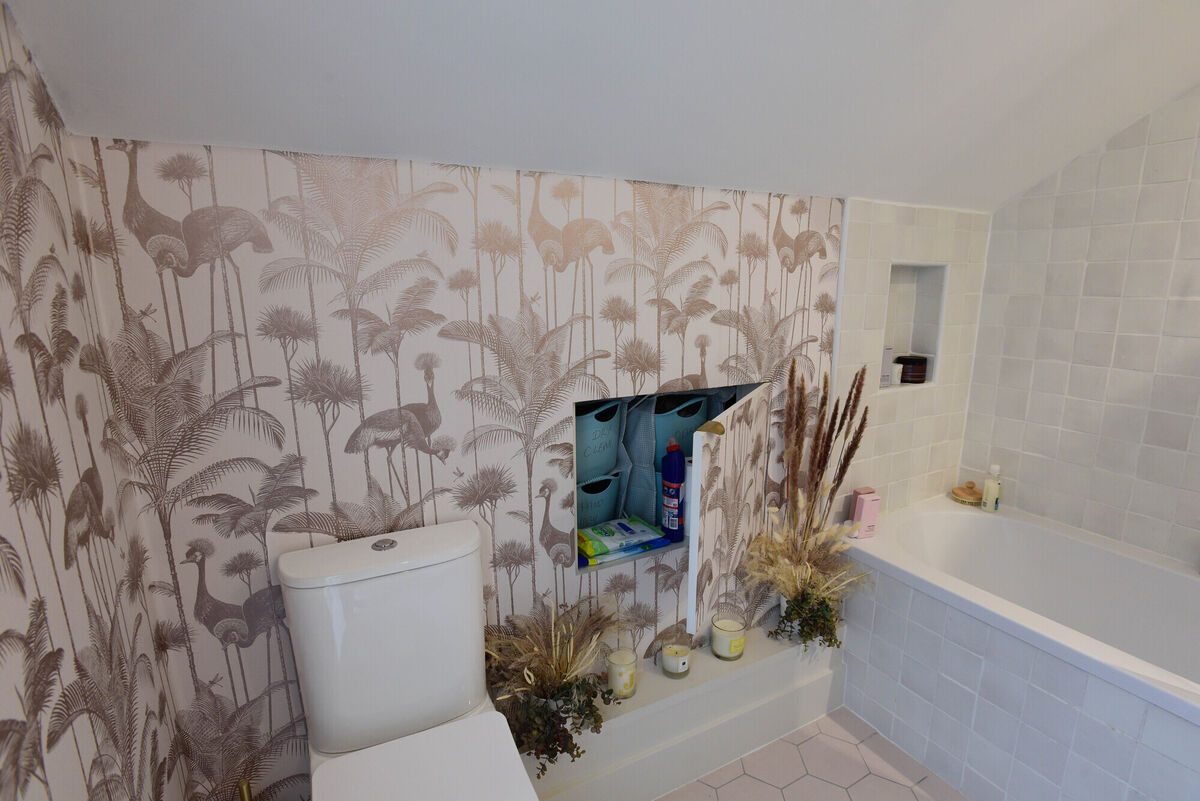Jennifer Sheahan: I'm a tiny house owner. Here's how I store bulky items, from suitcases to skis

Bench seating with hinged lids is great for storing large or long items, writes Jennifer Sheahan. Here she's done exactly that in her living area. Pictures: Moya Nolan
My builder cut a small access door into the wall, and suddenly I had an enormous, invisible storage space. It’s an awkward area that requires crawling and bending to access, but it’s ideal for suitcases, seasonal decor, and one random piano stool that I’ve never used but can’t seem to throw away.

Drawers are ok, but less useful for large, bulky items. If you already have a bed but no storage, measure the available space underneath and buy storage boxes that will slide easily underneath — clear boxes are best so that you can find things easily.













